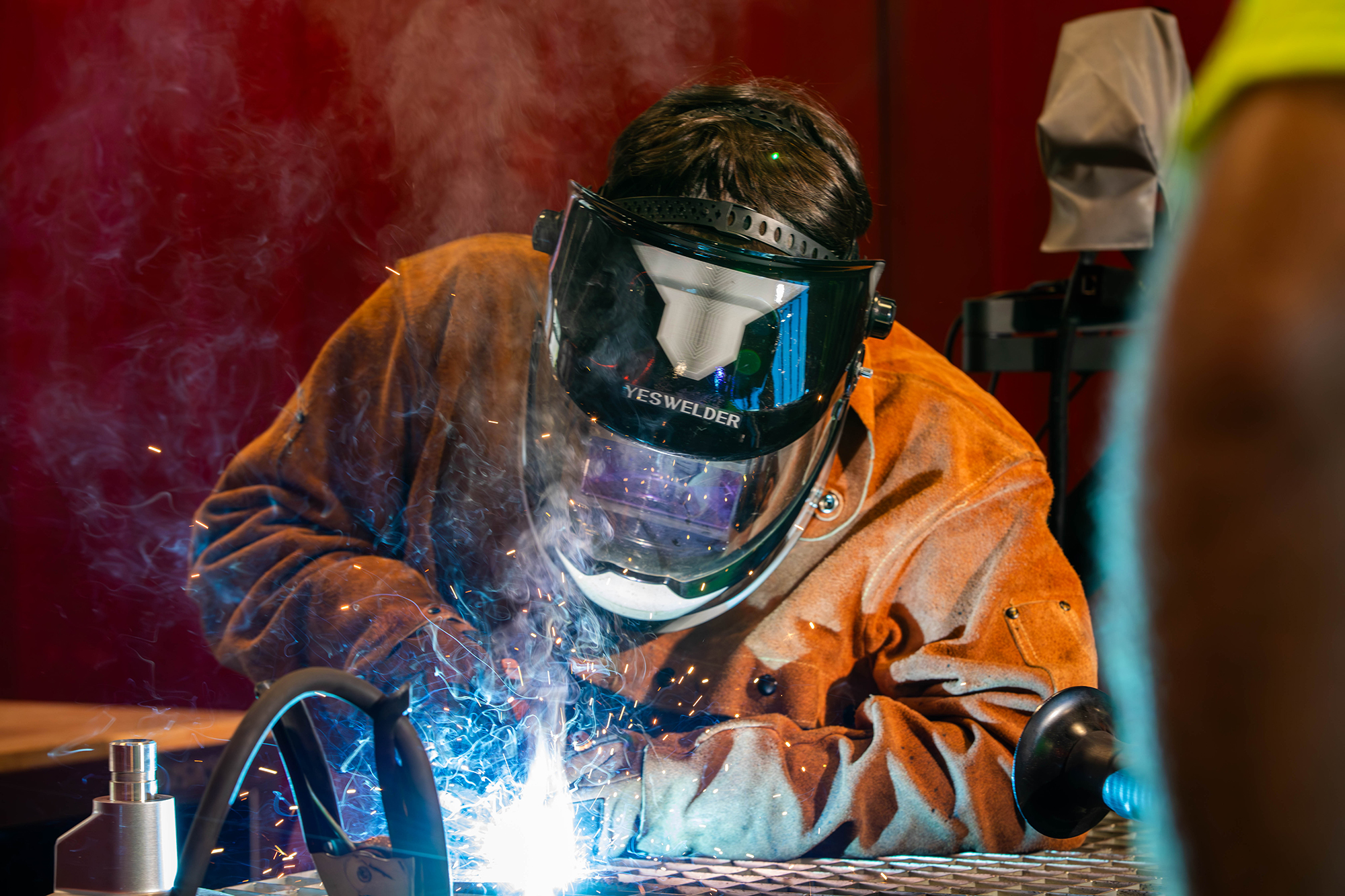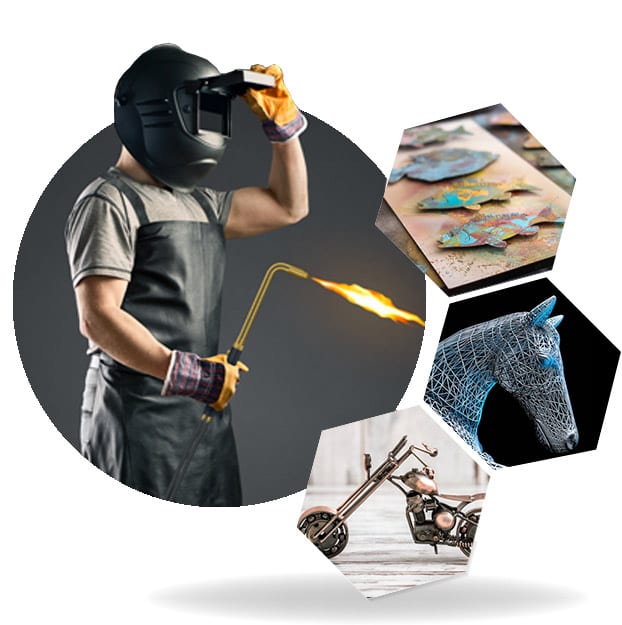Usual Welding Repair Issues and How to Address Them Effectively
Welding fixings often encounter a variety of concerns that can endanger the stability of the final product. Common problems include inadequate infiltration, porosity, and misalignment, to name a few. Each defect provides special challenges that require details techniques for resolution. Understanding these issues is crucial for welders aiming to enhance their results and skills. This conversation will certainly explore these typical welding fixing issues and effective methods to resolve them.
Poor Infiltration
Poor infiltration happens when the weld steel falls short to fully fuse with the base material, resulting in weak joints and prospective architectural failings. This problem usually comes from inadequate heat input, wrong electrode angle, or improper welding speed. Welders may experience poor penetration due to a miscalculation of the essential specifications for a certain product thickness or type. In addition, contamination on the base product's surface can prevent efficient bonding, worsening the issue. To resolve inadequate infiltration, welders need to guarantee appropriate setups on their tools and keep a clean work surface. Regular inspection of welds is advised to determine any kind of deficiencies early, enabling timely adjustments and the avoidance of jeopardized architectural integrity in welded settings up.
Porosity
Porosity is a common flaw in welded joints that shows up as small gas bubbles trapped within the weld steel. This problem can jeopardize the integrity of the weld, leading to reduced stamina and potential failure under stress and anxiety. Montana Mobile Welding and Repair Fabrication. Porosity normally arises from contamination, dampness, or incorrect welding strategies, which allow gases to escape into the molten weld pool. To attend to porosity, welders should assure correct surface area preparation, keep a tidy functioning environment, and make use of appropriate welding criteria. In addition, selecting the best filler product and securing gas can mitigate gas entrapment. Normal examination and testing of welds can assist identify porosity early, assuring timely restorative activities are taken, therefore preserving the high quality and integrity of the bonded structure
Imbalance
Misalignment in welding can develop from different elements, including incorrect setup and thermal expansion. Recognizing the origin is necessary for effective resolution. Numerous improvement strategies are available to straighten components and guarantee structural stability.
Root causes of Imbalance
Welding imbalance typically originates from a selection of underlying concerns that can endanger architectural stability. One key reason is incorrect fit-up of components prior to welding, which can result in gaps and uneven surface areas. Variations in thermal development during the welding procedure can likewise lead to distortion, particularly if the materials being joined have various coefficients of growth. Furthermore, inadequate clamping and fixturing may fail to hold parts securely in position, leading to activity throughout welding. Badly conserved tools, consisting of welding makers and devices, may introduce variances in the weld grain, more contributing to misalignment. Operator mistake, stemming from not enough training or experience, can additionally play a substantial function in creating misaligned welds.

Adjustment Strategies Offered
Resolving imbalance successfully calls for a mix of restorative techniques customized to the details concerns at hand. One typical method is the usage of fixtures or jigs to hold components in the right setting during welding, making certain consistent positioning. Additionally, preheating the materials can help reduce distortion and boost fit-up. For significant misalignment, mechanical adjustment techniques, such as using hydraulic jacks or clamps, can be used to fix the position before welding. Post-weld warm treatment may additionally be required to eliminate stresses triggered by imbalance. Mindful evaluation and adjustment throughout the setup stage can protect against imbalance concerns from becoming considerable troubles, promoting a smoother welding procedure and boosting total structural integrity.
Distortion
Distortion is a common difficulty in welding that can occur from numerous factors, including uneven cooling and heating. Comprehending the root causes of distortion is essential for applying efficient prevention strategies. Addressing this problem not just boosts architectural integrity however likewise improves the total quality of the weld.
Causes of Distortion
When based on the intense warmth of welding, materials usually undergo adjustments that can cause distortion. This phenomenon largely emerges from thermal growth and tightening during the welding procedure. As the weld area heats up, the product expands; upon cooling, it acquires, which can develop internal anxieties. Furthermore, uneven heating throughout a workpiece can exacerbate these stresses, causing bending or flexing. The sort of material additionally plays a significant function; steels with differing thermal conductivity and coefficients of expansion might react in different ways, leading to uncertain distortions. Furthermore, bad joint layout and poor fixturing can contribute to imbalance throughout welding, increasing the probability of distortion. Recognizing these causes is important for efficient welding repair and avoidance approaches.
Prevention Techniques
Effective prevention methods for distortion throughout welding concentrate on controlling heat input and making certain proper joint style. Preserving a consistent heat input assists to minimize thermal expansion and contraction, which can result in distortion. Using strategies such as pre-heating the work surface can likewise decrease the temperature slope, promoting uniform home heating. In addition, choosing suitable joint styles, such as T-joints or lap joints, can improve stability and reduce anxiety concentrations. Executing appropriate fixturing to protect the work surfaces in position better help in keeping placement throughout the welding procedure. Lastly, staggered welding series can distribute warm extra uniformly, protecting against local distortion. By applying these methods, welders can greatly lower the possibility of distortion and enhance the general top quality of their welds.
Breaking
Splitting is a typical issue run into in welding repair services, commonly resulting from various factors such as incorrect air conditioning rates, product selection, or insufficient joint prep work. The event of cracks can significantly compromise the stability pop over here of the weld, causing possible failings throughout operation. To address this concern, welders have to initially assess the source, making certain that products are compatible and properly picked for the details application. In addition, controlling the cooling rate during the welding procedure is crucial; fast air conditioning can cause anxiety and lead to splitting. Proper joint design and preparation also contribute to minimizing the threat. Carrying out these techniques can improve weld quality and sturdiness, inevitably minimizing the chance of fracturing in ended up weldments.

Incomplete Combination
A significant problem in welding repair services is insufficient blend, which takes place when the weld steel does not effectively bond with the base product or previous weld passes - Montana Mobile Welding and Repair Belgrade Welding. This defect can bring about weaknesses in the joint, potentially compromising the integrity of the welded framework. Variables contributing to insufficient fusion include not enough warmth input, inappropriate welding strategy, and contamination of the surface areas being signed up with. To resolve this issue successfully, welders need to ensure appropriate pre-weld cleansing and surface area prep work, along with change their welding specifications to achieve appropriate infiltration and fusion. Routine examination throughout the welding procedure can likewise assist determine insufficient fusion early, enabling prompt corrective steps to boost the total top quality of the weld
Overheating
While welding repair work can boost structural honesty, overheating offers a significant challenge that can lead to material destruction. Too much warm during welding can modify the mechanical properties of metals, causing reduced strength, enhanced brittleness, and warping. This phenomenon is specifically vital in high-stress applications where structural dependability is vital. Identifying overheating can entail aesthetic assessments for staining or distortion, in addition to monitoring temperature level during the welding procedure. To reduce the dangers connected with overheating, welders must employ suitable methods, such as regulating warm input, adjusting traveling rate, and utilizing appropriate filler materials. Furthermore, applying pre- and post-weld heat treatments can assist recover material residential properties and boost the general quality of the repair, making sure lasting performance and safety.
Regularly Asked Inquiries
What Are the Typical Indications of a Welding Defect?

Exactly How Can I Examine My Welds for Quality?
To examine welds for top quality, one can make use of aesthetic assessments, ultrasonic testing, and radiographic approaches. Each method guarantees structural honesty, recognizes problems, and confirms adherence to defined requirements, ultimately enhancing the dependability of the welded joints.
What Safety Precautions Should I Take While Welding?
When welding, one ought to prioritize safety and security by using proper personal safety tools, guaranteeing proper ventilation, safeguarding flammable products away, keeping a tidy work space, and knowing surroundings to stop injuries and crashes.
Can I Fix a Weld Without Remodeling the Entire Joint?
Repairing a weld without redesigning the entire joint is feasible, depending upon the damages (Montana Mobile Welding and Repair Belgrade Welding). Strategies such as grinding, including filler check my source material, or utilizing a welding procedure can successfully deal with particular defects while maintaining the bordering framework
What Equipment Are Necessary for Efficient Welding Fixes?
Essential devices for reliable welding repair services consist of a welding equipment, cable brush, grinder, protective gear, clamps, and filler materials. Each tool plays an important function in making sure top quality and safety throughout the repair service process. Porosity typically emerges from contamination, dampness, or improper welding techniques, which allow gases to escape into the liquified weld pool. Poorly maintained devices, consisting of welding makers and tools, might present incongruities in the weld bead, more adding to imbalance. When subjected to the extreme warmth of welding, materials usually undergo changes that can lead to distortion. Cracking is an usual problem encountered in welding repair services, frequently resulting from different factors such as inappropriate air conditioning prices, material option, or inadequate joint prep work. A significant investigate this site concern in welding repair services is incomplete combination, which takes place when the weld metal does not sufficiently bond with the base product or previous weld passes.